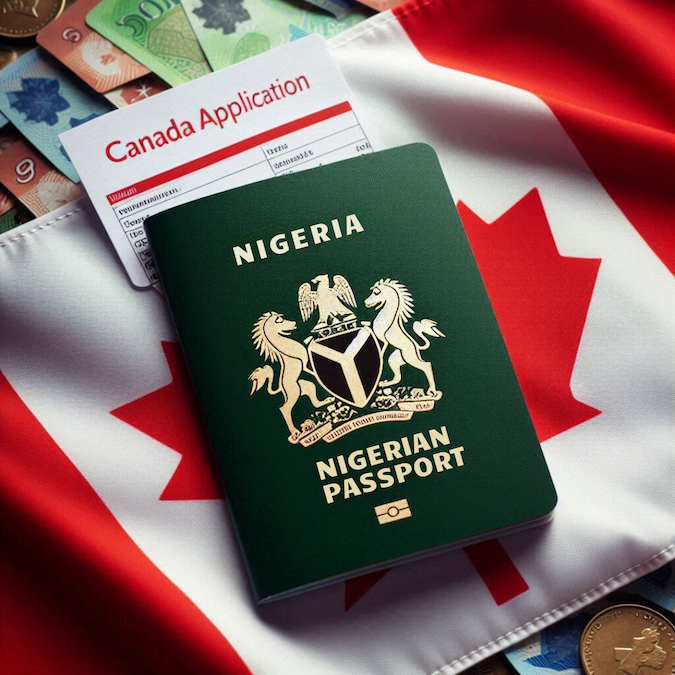News
Canada Updates Visitor Visa Guidelines, Here Is Everything You Need to Know for a Successful Application

In a significant update that will impact thousands of international travelers, Canada’s Immigration, Refugees and Citizenship Canada (IRCC) has revised its policies for issuing single-entry and multiple-entry visitor visas.
This new approach gives immigration officers greater discretion in deciding the type and validity period of visas, shifting away from the previous standard where multiple-entry visas with maximum validity were commonly issued.
Key Changes to Canada’s Visitor Visa Policy
The latest updates provide visa officers with more flexibility to assess each applicant’s unique circumstances. Instead of automatically issuing multiple-entry visas with a 10-year validity, officers are now encouraged to evaluate factors like the purpose of visit, financial stability, health conditions, and ties to the applicant’s home country.
In this comprehensive guide, we’ll break down what these changes mean for visa applicants and provide practical tips to improve your chances of a successful visa application.
Single-Entry vs. Multiple-Entry Visas: What’s the Difference?
Under Canada’s updated visa policy, immigration officers will now decide between issuing single-entry or multiple-entry visas based on each applicant’s profile.
1. Multiple-Entry Visa
• Overview: Allows the holder to enter Canada multiple times within the visa’s validity period.
• Validity: Previously issued for up to 10 years or until passport expiry, but now may have a shorter duration based on officer discretion.
• Requirements: Holders can use a visa affixed to an expired passport if both old and new passports are presented upon entry.
2. Single-Entry Visa
• Overview: Permits only one entry to Canada. After leaving, the holder must apply for a new visa to re-enter.
• Common Use: Typically issued for one-time events like conferences, medical treatment, or short-term business visits.
New Guidelines for Issuing Visitor Visas
Officers are now instructed to consider several factors when deciding between single or multiple-entry visas:
1. Purpose of Visit
• One-Time Event: Single-entry visas are preferred for applicants attending specific events, like weddings or conferences.
• Frequent Travel: Multiple-entry visas may be issued to those with strong reasons to visit Canada repeatedly, such as family ties.
• Compassionate Grounds: Special cases, like visiting critically ill family members, will be assessed for the most suitable visa type.
2. Financial Stability
• Applicants with strong financial backing are more likely to qualify for multiple-entry visas.
• Documentation from employers, sponsors, or proof of self-sufficiency will strengthen the application.
3. Health Conditions
• If the applicant has ongoing medical issues, officers may issue a single-entry visa or a shorter-duration multiple-entry visa to monitor compliance with visa conditions.
4. Ties to Home Country
• Strong evidence of ties, such as employment, family, or property ownership, can influence the issuance of a longer-duration visa.
• Applicants with previous visa refusals may face increased scrutiny.
Determining the Visa Validity Period
Officers are now empowered to issue visas with shorter validity periods. Here’s what might influence the duration:
• Purpose of Visit Duration: Short-term business activities may warrant a visa valid only for the required period.
• Country of Residence Stability: Political or economic instability in an applicant’s home country may result in a shorter visa.
• Changing Ties: If ties to the home country may weaken over time, a shorter visa validity may be issued.
Implications for Applicants
The new policy means a more personalized assessment of visa applications. Here’s what you need to be aware of:
• Stricter Scrutiny: Applicants should be prepared to provide detailed documentation to justify their visa type.
• No Automatic 10-Year Visas: The previous standard of issuing multiple-entry visas with maximum validity is no longer in effect.
• Enhanced Focus on Purpose: Officers will closely evaluate the reason for travel, requiring applicants to be transparent about their intentions.
Top Tips for a Successful Canada Visitor Visa Application
1. Provide Clear Documentation: Demonstrate a clear purpose for your visit, backed by evidence of your ties to your home country.
2. Show Financial Stability: Include proof of funds, whether self-funded, sponsored by a host, or covered by an employer.
3. Highlight Strong Ties: Proof of employment, property ownership, and family obligations can reassure officers of your intention to return home.
4. Prepare for Health Questions: If traveling for medical reasons, provide health insurance coverage and related documents.
5. Be Transparent: Fully disclose any previous visa refusals and explain any changes in circumstances.
Processing Times by Country
Processing times for visitor visas vary by country:
• India: 113 days
• United States: 26 days
• Nigeria: 175 days
• Pakistan: 29 days
• Philippines: 18 days
Understanding Canada Visitor Visa Duration
While multiple-entry visas used to have a default validity of up to 10 years, this is no longer guaranteed. The visa sticker on your passport will indicate the specific duration approved by immigration officers.
Canada’s updated visitor visa guidelines represent a significant shift in immigration policy, emphasizing a more personalized and case-by-case approach. While the changes aim to enhance the integrity of Canada’s immigration system, they also present new challenges for applicants who must be prepared with thorough documentation and clear justifications for their travel plans.
Whether you’re planning a short visit for tourism, family gatherings, or business, understanding these new guidelines can help ensure a smooth application process. Stay informed, prepare diligently, and increase your chances of securing the visa that best suits your travel needs.
Got questions? Share your thoughts in the comments, and stay tuned for more updates on Canadian immigration policies!




